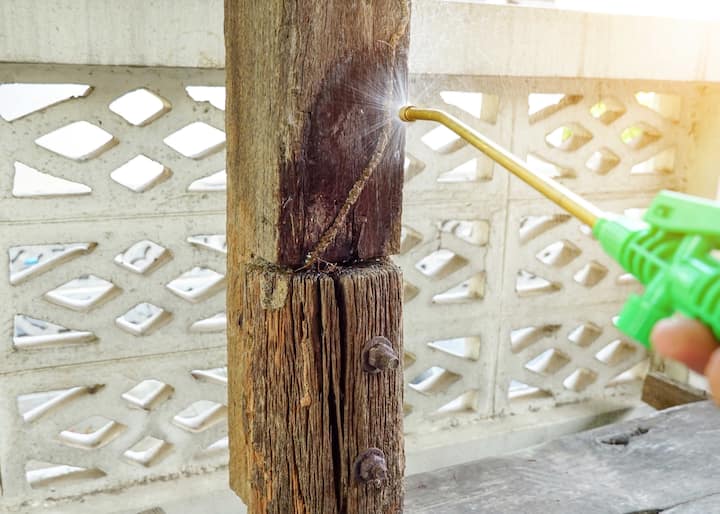Connecting you with a Orlando pro to get your fast, local termite removal estimate
1. Call our team or complete our local estimate form
Our termite removal network operates locally, which means that all calls and form completions are directly routed to experts in your area. You will only incur charges if you choose to proceed with one of our termite removal network professionals. Rest assured that your property will receive top-notch termite removal services from our trusted network of professionals.
2. Connect with a local Orlando termite removal expert
If you’re pressed for time, filling out our form is a convenient option to have one of our termite removal professionals get in touch with you at a later time. However, if you need to connect with a termite removal expert promptly, a phone call is the way to go. Our termite removal professionals are readily available to provide you with a estimate over the phone. In some cases, additional discovery may be necessary, and the termite expert may want to conduct some basic inspections before presenting an estimate.
Why you need Orlando's expert termite removal services
Termites: The Silent Destroyers of Your Home
Termites are wood-destroying pests that can cause significant damage to your home if left unchecked. They feed on cellulose, a component found in wood, and can quickly compromise the structural integrity of your property. These subterranean insects live in colonies and can infest your home without you even knowing it.
Signs of a Termite Infestation
It’s essential to be aware of the signs of a termite infestation to protect your home. Some telltale indicators include:
- Mud tubes: Termites build mud tubes to travel between their colony and food sources. These tubes may be visible on walls, foundations, or other areas of your home.
- Discarded wings: Swarmers, or reproductive termites, shed their wings after mating. Finding discarded wings near windows, doors, or other openings suggests an active infestation.
- Hollow-sounding wood: When termites feed on wood, they hollow it out, creating a hollow sound when tapped.
- Buckling or sagging floors: Severe termite damage can weaken the structural supports of your home, leading to buckling or sagging floors.
- Damaged wood: If you notice wood that has been chewed or has holes, it may indicate a termite infestation.
Consequences of Termite Infestation
Ignoring a termite infestation can have devastating consequences for your home:
- Structural damage: Termites can weaken the structural integrity of your home, potentially compromising its safety and habitability.
- Financial loss: The cost of repairing termite damage can be extensive, devaluing your property and potentially affecting its salability.
- Health hazards: Termite infestations can create moisture problems that can lead to mold growth, posing health risks to you and your family.
Termite Control and Prevention
Protecting your home from termites requires a comprehensive approach:
- Regular inspections: Schedule regular termite inspections by a qualified pest control professional to identify and address any infestations early.
- Termite treatments: If an infestation is discovered, professional termite treatments can effectively eliminate the colony and prevent further damage.
- Moisture control: Termites thrive in moist environments. Reduce moisture around your home by fixing leaky faucets, repairing gutters, and maintaining proper drainage.
- Wood removal: Remove any wood debris or firewood from your property, as it can attract termites.
- Barriers: Install physical barriers, such as trenching or chemical repellents, around your home to deter termites from entering.
If you suspect a termite infestation, it’s crucial to contact a reputable pest control company immediately. Early detection and treatment are essential to minimize damage and protect your home. Remember, ignoring termites can lead to costly consequences. By taking proactive measures, you can safeguard your property and ensure the safety and comfort of your family.
